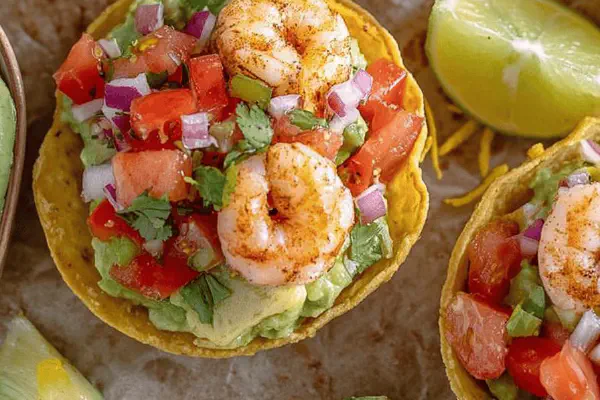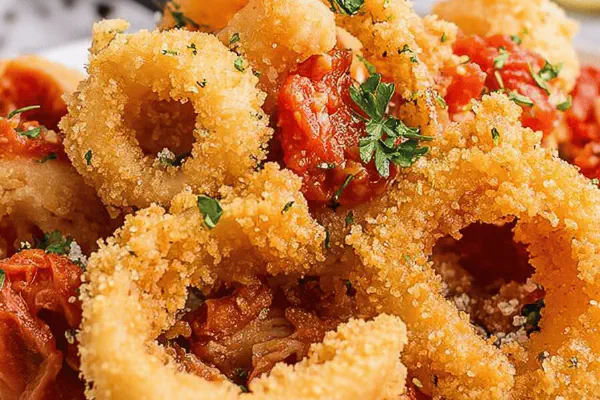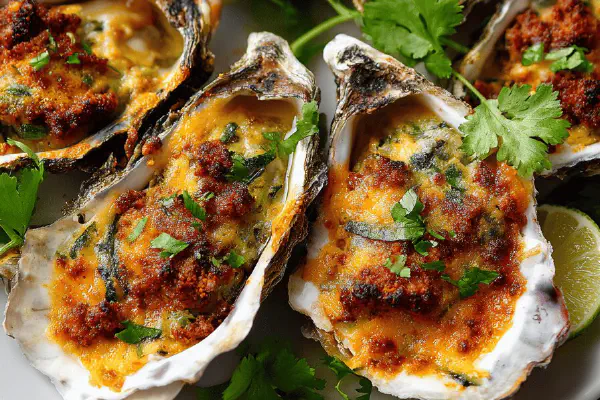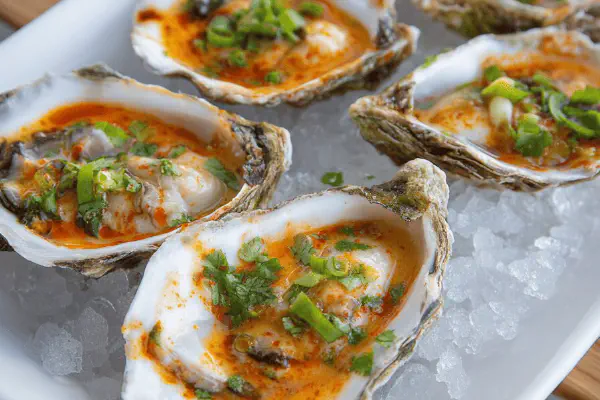Tuna Tartare Avocado Mousseline
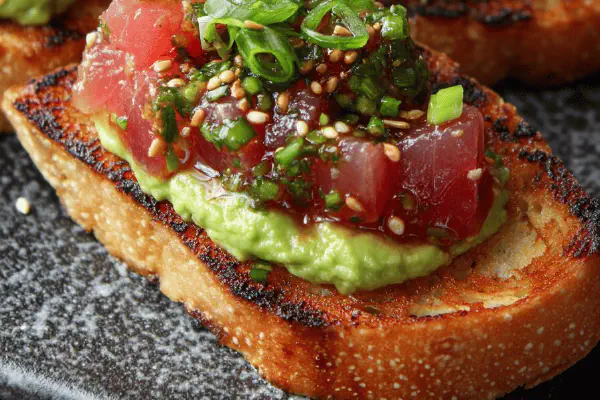
By Emma
Certified Culinary Professional
Ingredients
Mousseline
- 1 ripe Hass avocado
- 20 ml lime juice
- 3 ml grated fresh horseradish
- pinch of salt
Tartare
- 2 scallions finely chopped
- 20 ml tamari soy sauce
- 10 ml toasted sesame oil
- 450 g sashimi grade tuna finely diced
- 15 ml toasted black and white sesame seeds
- 1 lime zest grated finely
- 30 g baby arugula
- 4 baguette croûtons grilled
- extra virgin olive oil drizzle
Twist additions
- 5 ml yuzu juice
- 5 g finely diced preserved ginger
About the ingredients
Method
Mousseline preparation
- Cut avocado flesh into chunks, toss immediately with lime juice to prevent browning. Pulse briefly in food processor with freshly grated horseradish until creamy but still slightly textured — not a puree. Salt lightly to balance earthiness. Cover tightly with plastic wrap pressed to surface; chill while prepping tartare. The slight coarse texture adds more bite than smooth avocado cream, allowing it to sit better next to fish.
Tartare assembly
- Combine scallions, tamari, toasted sesame oil, yuzu juice, and diced preserved ginger in a bowl. Stir to marry flavors - this will season the tuna. Gently fold in diced tuna; careful not to mash. Taste test now and adjust salt or acidity. The preserved ginger adds an unexpected sweet-spicy pop, cutting raw fish richness and complementing toasted sesame’s nuttiness. Let sit 5 minutes to amalgamate but no longer or tuna loses freshness.
Plating
- Chill four plates beforehand; cold slows avocado and fish from softening too quickly. Use a ring mold or any circular cutter to shape tartare: pack tuna first, gently pressing down but not compacting. Layer a quenelle of avocado mousseline close by or on top for contrast. Sprinkle sesame seeds over both elements, zest lime finely atop to release oils and fragrance. Garnish with baby arugula — peppery and crisp, works like a palate refresher here.
- Arrange warm grilled baguette croûtons on side; they must be dry crisp, not greasy, to add crunch. Finish with a light swirl of quality extra virgin olive oil. This oil adds fruity brightness and smooth mouthfeel, contrasting with toasted sesame’s deep aroma.
- Serve promptly to avoid avocado discoloration or fish warming up. Tuna must be very fresh; if unavailable, substitute with fresh yellowfin or Arctic char for a similar texture but softer flavor profile. Wasabi replaced here by fresh horseradish because it blends better with green avocado and yuzu acidity, less one-note heat but a complex rhizome sharpness.
Troubleshooting and tips
- If avocado begins oxidizing before serving, cover tightly and add a tear or two of extra lime juice to refresh color. If tuna juice pools, drain slightly on paper towel before mixing - keeps tartare clean. For an alternative base, substitute baby arugula with micro cilantro or shiso leaf for different herbal notes. Baguette stale? Use rice crackers or toasted lavash instead; texture contrast critical.
- Timing is key. Don’t prep tartare and leave it too long — fish loses texture, flavors dull. Avocado mousseline can be prepped hours ahead but keep chilled and sealed.
- The goal: balance savory, acidity, creaminess, and texture. Each element matters; skipping one leads to a flat plate. Sesame oil must be toasted – raw sesame oil is bitter here. And always, trust your nose and palate — no recipe fixes bad quality ingredients.
Cooking tips
Chef's notes
- 💡 Keep avocado chunks noticeable, not a puree. Overprocessing lets it turn gluey. Pulse briefly after tossing with lime juice — stops browning, keeps texture intact. Horseradish grated fresh adds earthy heat, not just sharp spice. Chill tightly covered or mousse oxidizes faster. Remember, a slightly coarse mousseline sits better with fish; texture contrast matter.
- 💡 Marry tartare flavors by stirring liquids first: tamari, sesame oil, yuzu, diced ginger. Fold tuna in gently — smashing kills texture and mouthfeel. Let sit 5 minutes maximum for flavors to meld. Longer resting dulls freshness, juices separate and create sogginess. Taste test for salt, acidity often — ginger adds punch so be cautious not to overdo lime or salt.
- 💡 Use cold plates when plating; chilled surface delays softening. Press tuna into ring mold gently, no compacting. Close-by avocado quenelle adds creamy relief. Sprinkle toasted sesame seeds just before serving — their fragrance pops once placed, not earlier. Lime zest top releases aroma and oils; do not skip. Baby arugula pepper adds necessary bite cleaning palate between mouthfuls.
- 💡 Bread croûtons dry and crisp, avoid oily or soggy slices — ruin crunch interplay critical here. Warm grilled day-old baguette preferred, heat triggers toasty smell. Drizzle olive oil sparingly at end for a glossy finish and fruity depth. Toasted sesame oil must be gently warmed; cold oil smells bitter and heavy. Use freshly toasted sesame seeds for best aroma; store sealed tightly to avoid rancidity.
- 💡 If avocado oxidizes early, tightly cover and add more lime juice — acid refreshes color fast. Tuna juice pooling? Drain on paper towel before mixing to keep tartare texture clean, not soupy. Substitute tuna with fresh yellowfin or Arctic char when unavailable. Baby arugula replaceable with micro cilantro or shiso leaf — alters herbal lift. For croûtons alternative: rice crackers or toasted lavash keeps crunch without heaviness.
Common questions
How to keep avocado from browning?
Toss with lime juice immediately. Chill fast and cover tightly. Add more lime just before serving if you spot oxidation. No air means slower browning. Fresh lime juice acidity critical. Don’t over-process mousse; some texture helps slow oxidation.
Can I use other fish besides tuna?
Yes, yellowfin and Arctic char work well. Similar firm texture but differ flavor profile. Avoid oily or soft fish or tartare becomes mushy. Frozen sashimi-grade also option but drain excess moisture well. Tuna gives distinctive taste, but alternatives extend availability.
What if tartare gets watery?
Drain tuna on paper towels before mixing. Excess liquid dilutes dressing, makes mushy. Also, avoid overmixing or breaking fish chunks. Resting too long leads to juice separation. Mix just before serving for freshest texture and avoid sogginess.
Best way to store leftovers?
Wrap mousse and tartare separately with plastic wrap pressed on surface. Keep chilled. Mousse oxidizes quickly; tartare loses texture and freshness if stored long. Up to 24 hours max but expect some flavor dulling. Reassemble fresh just before serving if possible.
